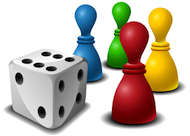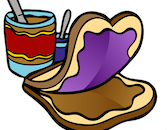Using History Games in Urban Classrooms
A MiddleWeb Blog
After reading the most recent post by Jody and Shara about Project Based Learning, I decided to reshape my second post about games in the history classroom to address the specific challenges teachers in the urban public school setting face with project assignments.
While project based learning is pedagogically sound in any classroom, to successfully execute such an assignment when many students are struggling readers without regular access to the internet takes careful planning.
While the ideas presented here can be utilized anywhere, many of the elements of this project are written with a setting like my own middle grades urban classroom in mind.
The PBL assignment: Create an original board game with a history theme.
The Project

- Students are not allowed to create trivia games
- The games cannot be clones of existing games (no Civil War-opoly)
- The game must reflect a subject covered in my history class
Do-it-yourself metacognition
When I introduced this project, my three restrictions were difficult for many of the students to negotiate.
Students were required to submit a short description of their proposed game for my approval before they could begin working on it. I rejected more than half of the initial proposals – the majority because they were, essentially, trivia games. Despite the grumbling, most student groups got over this rebuff and set about coming up with more creative ideas.
For many, this required reviewing texts we had read earlier in the year, which was one of my goals for this project. Because the students were looking for game ideas, they were attentive to their own reading comprehension. Without any prompting, they were rereading, checking their own understanding and asking for clarification from me or their classmates. This kind of metacognitive self-reflection and active reading is ideal for struggling readers, and something I had been trying to encourage all year.
Research and motivation

As students realized that they needed more information than they were finding in the texts I had written or the history textbook, they would ask for more information. I could then direct individuals to specific texts or – when a computer was available – help them conduct a limited online search for additional material.
What I found most impressive about these early stages of the project was the level of intrinsic motivation. Re-reading texts and additional research were not explicitly stated as a requirement for the project; it simply became clear to each student group that they could not create a good game without understanding the subject matter.
Project time investment
It can be difficult to give up time in class to projects like this. We are often under so much pressure to “cover the material,” and many administrators view creative projects as a distraction from content. Despite this, I devote two or more weeks of in-class time to this project. Some of this is pragmatic: many of my students simply do not have access to the necessary materials to complete the project at home. I also find that working actively with each group provides me with the opportunity to help students engage in higher order thinking skills.

Categorization of that sort is an essential academic skill in any discipline. Similarly, to be able to extrapolate a set of rules from the relationship between those categories requires a sophisticated evaluation of the material.
Without the time in class to talk through their ideas, few student groups will create anything interesting or sophisticated. If the goal is to get them to critically think about what they have learned and to reinterpret historical concepts through their own lens, then giving up the “content time” is well worth it.
Step By Step
Given how much practice many of my students need with writing of any kind, and the emphasis the Common Core English standards place on technical writing, requiring students to write out clear instructions for the game is one of the most important steps. However, if you simply tell students to write the rules for their game, the rules will look something like this:
Rule 1: No cheating
Rule 2: Players take turns
Rule 3: The player with the most points wins
There is a lesson used by many English teachers in middle school or early high school to demonstrate how difficult it can be to give clear instructions. The teacher takes out a loaf of bread, a jar of jelly, a jar of peanut butter and a butter knife. She then asks the students to direct her in the making of a peanut butter and jelly sandwich.

Before students begin writing their rules, I tell them they must play-test their game to make certain it works. Then the team must invite me to play through the game with them. As with the peanut butter sandwich, I insist on very clear instructions as the students walk me through game play. I point out the places where they clearly have no rules or the rules are ambiguous.
Once the actual rules have been ironed out, I tell one person in the team to write down the rules exactly as they are being described to me during gameplay. If I need to move on, I make it clear that the students should play as they write down the rules, so that nothing is left out. After all of the possible instructions are written down, I help one member of the team edit their rules while the rest work on completing the board and game pieces.
What’s in a game?
It can be difficult to strike a balance between creative freedom and academic rigor with an activity like this. As much as I like watching students have fun and express their budding personalities, the goal is to prepare the students for more challenging academic work in high school and beyond.
Ultimately, because they were creating games, many of my students assumed they were having fun even when they were engaged in research and technical writing that would have bored them in any other context. I made it my job to direct student energy to these more challenging tasks as necessary.
While most well-planned project assignments will encourage students to think critically about the material under study, the board game project is the one with which I have had the most success to date. As a group project, it is ideal: the writers, illustrators, facilitators and craftier students all have something to do the entire time. Even the least engaged students will end up, at the very least, playing another person’s game creation.
By the end, most students have created something tangible using skills developed in the classroom. Ultimately, that may be the most valuable lesson, as they leave your class looking for other ways to apply their skills in the world at large.
































Great article and great idea! Thanks for sharing!
This is exactly why MORE teachers need to network and share ideas. I teach in a similar urban community in Ventura Co. Awesome stuff Bro! Thanks for sharing.
What a great project… really got me thinking. Is there any chance you would share your lesson plan and rubric for this project?
Thanks!